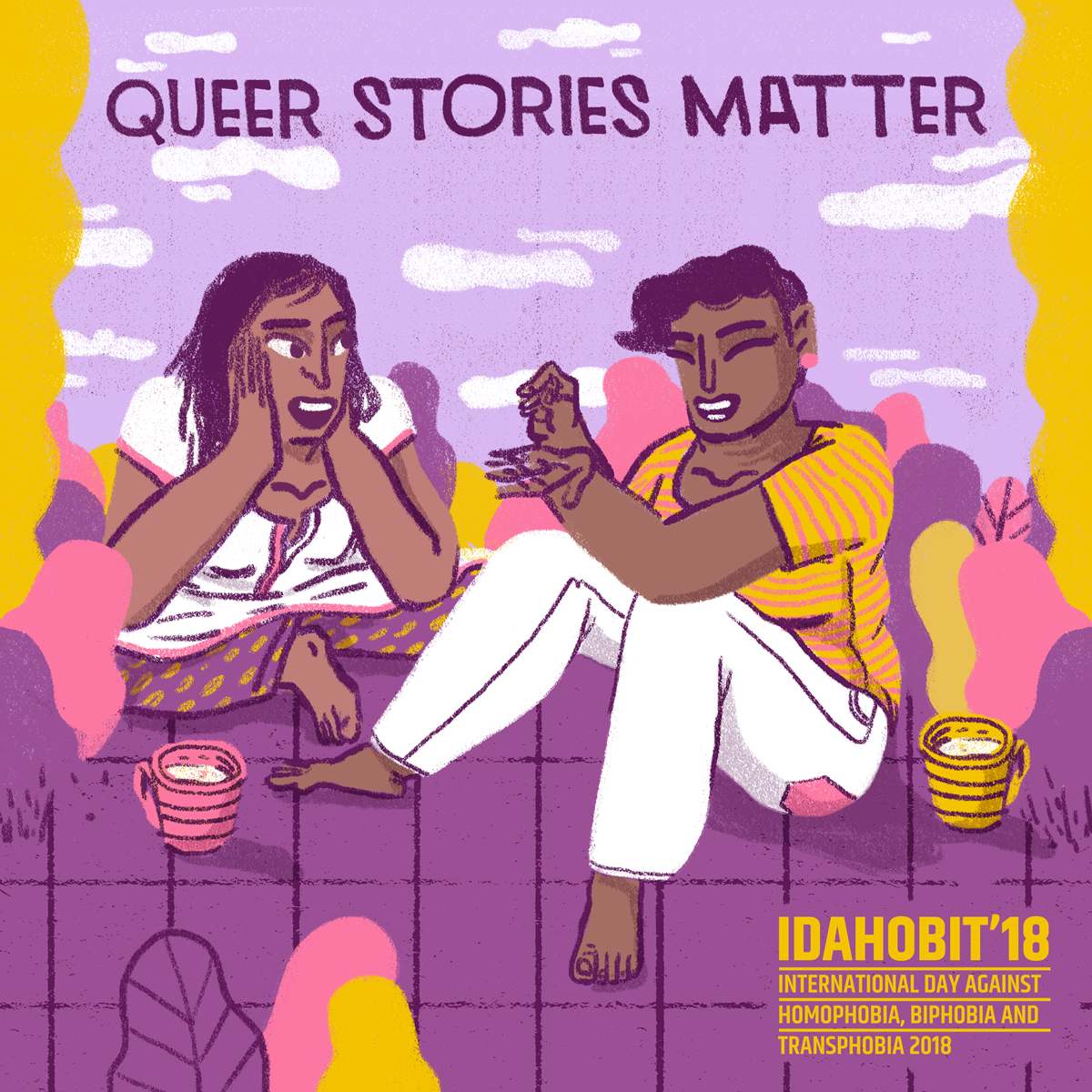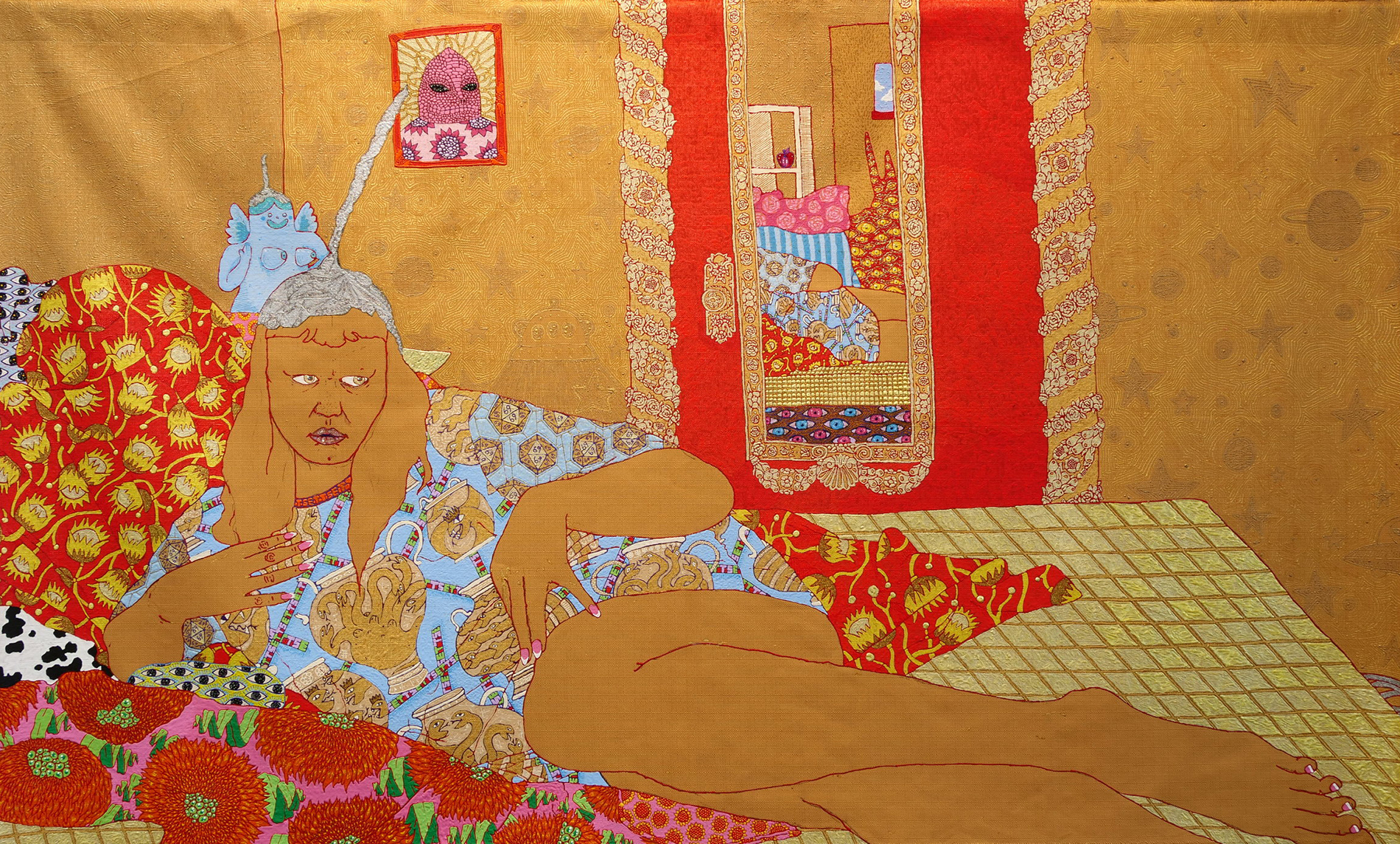Kruttika Susarla is Empowering India's Queer Community

New Delhi-based illustrator Kruttika Susarla is informing and empowering the queer community in India.
Cover photo: International Day Against Homophobia, Biphobia and Transphobia, series, illustration, by Kruttika Susarla (2018). Via the artist’s website.
This article is part of my 30 Living Queer Artists Worth Celebrating in 2019 series. June is Pride Month, commemorating the international gay rights movement that began June 28th, 1969, with the Stonewall riots of New York. 2019 marks the 50th anniversary of the event. I’m celebrating all month long!
WARNING: The following article features and/or discusses nudity and homoerotica.
Addendum: Kruttika Susarla does not identify as queer but her work is very much important for the LGBT+ community.
Kruttika Susarla
Kruttika Susarla is an illustrator, graphic designer, and comic creator who focuses on social justice issues through her work, including caste struggle, feminism, body-positivity, disability, and LGBT+ rights.
The New Delhi-based artist is best known for her 36 days of Feminist Type series, for which she illustrated a variety of concepts and terms. She notes, “I sought to contextualise the feminist movement within the lived experiences of women and minorities in India.”
Susarla’s work is visual activism. She explains, “There is urgency now, more than ever with the globally volatile political situation, hate crimes, violence against women, to advocate for social change. Art has the power to break barriers, move people, help them organise and dissent. Thus, a politically informed artist becomes an effective medium to bring about an impact in society through their work by focusing on this urgency.”
A for Androgyny, illustration, by Kruttika Susarla (2017). Via the artist’s website.
B for Bodily Integrity, illustration, by Kruttika Susarla (2017). Via the artist’s website.
C for Continuous Consent, illustration, by Kruttika Susarla (2017). Via the artist’s website.
International Day Against Homophobia, Biphobia and Transphobia, series, illustration, by Kruttika Susarla (2018). Via the artist’s website.
Queerness in India
India is currently the second most populous country in the world, and it is estimated to surpass China to become the first by 2027. According to the Indian government, 2.5 million people have declared their homosexuality to the health ministry (though this is likely underreported).
Queerness was generally accepted in India until British colonialism. The Hindu Vedas refer to a “third sex.” The UNESCO listed Khajuraho temples feature images of same-sex love, and even the 2,000-year old Kama Sutra depicts homosexual acts.
Britain imposed strict heterosexuality and gender-binary in their colonies all over the world. In India, during the 1860s, the British introduced Section 377, which criminalized “carnal intercourse against the order of nature.” While British attitudes have changed, former colonies have been slow to catch up. Just last year, in September of 2018, India’s Supreme Court finally and unanimously struck down Section 377.
Still, attitudes have been slow to change. “The ideology of marrying a woman and having children here is deeply rooted,” says Shubhankar Mondal, an openly gay medical student in the city of Patna.
A combination of education and media representation is vital in shifting attitudes towards the LGBT+ community. Part illustrator, part activist, Kruttika Susarla has emerged as an important voice for queer people in India.
Comprehensive Sexuality Education, spread from book, by Kruttika Susarla (2018). Via the artist’s website.
The Law isn’t straight: A queer person’s guide to accessing rights, book cover, by Kruttika Susarla (2018). Via the artist’s website.
Trans Rights Policy Brief, spread from book, by Kruttika Susarla (2018). Via the artist’s website.
LGBT+ Rights Education
Susarla has collaborated with a variety of organizations to create educational materials to inform the Indian community — both citizens and policy makers — about queer issues.
In 2014, India’s Supreme Court ruled that transgender people have equal rights under the law but they still suffer from discrimination. Susarla designed and illustrated The Trans Rights Policy Brief in 2018, created to inform transgender people, policy makers, and fellow citizens about trans issues.
Susarla has frequently partnered with the YP Foundation, a New Delhi-based non-profit that advocates for sexual and reproductive rights. Susarla designed and illustrated two publications for the campaign Know your Body, Know your Rights, which explain the need for comprehensive sexuality education.
“Policy documents and guidelines are often written in very complicated language, outdated English or are usually very jargon-heavy. Sometimes, it even feels like they are convoluted on purpose so as to keep citizens from accessing their rights,” Susarla explains. Her illustrations make these complex publications accessible to the public.
In collaboration with the Vidhi Centre for Legal Policy, Susarla illustrated The Law isn’t Straight: A Queer Person’s Guide to Accessing Rights, a comprehensive toolkit to help LGBT+ people navigate daily life. The manual includes information about identification documents, education, healthcare, discrimination, and personal finances.
Many of the publications Susarla has illustrated are available in both Hindi and English, and they are used in workshops and trainings to further the dialogue around LGBT+ rights and push for legislative action.
International Day Against Homophobia, Biphobia and Transphobia, series, illustration, by Kruttika Susarla (2018). Via the artist’s website.
Solidarity
Kruttika Susarla’s work is more important than ever. Just last week, India’s newly-elected government, under Prime Minister Narendra Modi, announced plans to re-introduce the Transgender Persons Bill, which has been denounced by the trans community as it would infringe on the rights gained from the 2014 Supreme Court ruling.
Susarla will be featured in Kadak Collective’s The Bystander Anthology, a diverse compendium of South Asian creatives who are “largely women, non binary, and queer.” Unfortunately the Kickstarter ended just a couple days ago but you can find more of Susarla’s art on Instagram!














